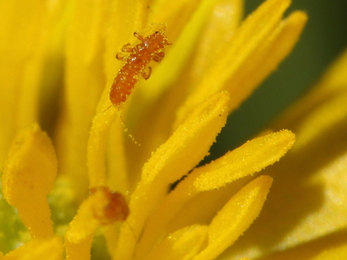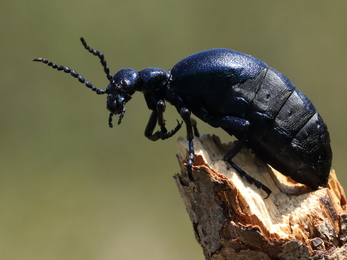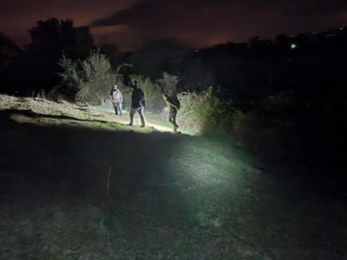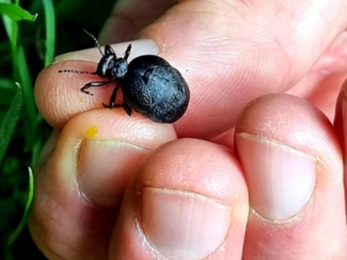Oil beetles are kleptoparasitic (steals its food from another animal) and they need solitary mining bees for their life cycle and survival. The loss and fragmentation of flower-rich habitats, and the decline of host bee species have contributed to the decrease in oil beetle population numbers. In Somerset we have three of the five oil beetle species: the Black oil beetle (Meloe proscarabaeus), Violet oil beetle (Meloe violaceus) and the Rugged oil beetle (Meloe rugosus).
Oil beetles get their name from the bitter tasting oil that they release from their leg joints when they are threatened. The oil contains a toxic chemical called Cantharidin. Some other insects such as midges and the cardinal beetle will bite the beetles to either feed on the oil or use it to enhance their own chemical defences.
Oil beetles have fascinating life cycles. Their larvae are known as triungulins as they have 3 hooks on each foot. When they emerge from their eggs in the spring, they climb up the vegetation and sit on top of flowers. There they wait for a solitary bee to attach themselves to, although they are known to often attach themselves to the wrong insect!





